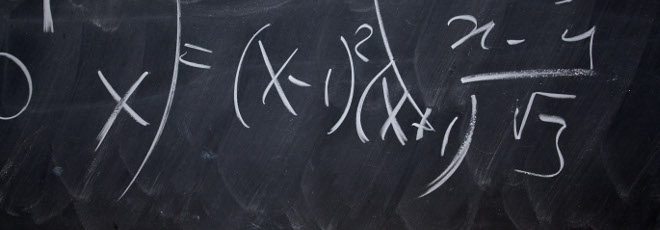
“On Wiener-Hopf Factorization of Matrix Functions: An effective criterion for a stable factorisation,‘Regularised’ versus ‘Exact’ factorization factorization”
Lunedì 9 Settembre 2024, ore 11:30 - aula 1BC50 - Gennady Mishuris (Aberystwyth University)
Abstract
For an $r \times r$ matrix function $S(t)$ defined on the unit circle $\mathbb{T}$, its (right) Wiener-Hopf factorization is the representation: $$S(t) = S^+(t)\Lambda(t)S_{-}(t) \tag{1}$$ where $S^\pm$, along with their inverses, can be extended analytically in $\mathbb{T}_+ = \lbrace z \in \mathbb{C} : |z| \lt 1 \rbrace $ and $\mathbb{T}_- = \lbrace z \in \mathbb{C} : |z| \gt 1 \rbrace \cup \lbrace \infty \rbrace$, respectively, and $\Lambda(t) = \mathrm{diag}( t^\varkappa_1, t^\varkappa_2,…,t^\varkappa_r), \varkappa_j \in \mathbb{Z}, j = 1, 2,…, r$, is a diagonal matrix. The integers $\varkappa_j$ are called (right) partial indices of $S$. We denote the ordered set of partial indices of $S(\varkappa_1 \ge \varkappa_2 \ge…\ge \varkappa_r)$ by $\mathcal{PI}(S)$. The set $\mathcal{PI}(S)$ is uniquely defined. However, if $\max \mathcal{PI}(S) \gt \min \mathcal{PI}(S)+1$, the factorization $(1)$ is unstable, i.e., small perturbation of the matrix $S$ can change the set $\mathcal{PI}(S) [1]$.
This creates a major obstacle to the application of the factorisation technique in practice. Only recently, some results on exact factorisation of matrix polynomials have been delivered eliminating this obstacle $[2, 3]$. Moreover, an effective criterion for a stable set of partial indices has been proposed $[4]$.
We discuss the main ideas behind this crucial result for application for a class of strictly nonsingular $2 \times 2$ matrix functions proving when the matrix admits canonical or stable factorization $[1]$. To achieve this goal, we propose an effective sufficient criterion that guarantees that, starting from some element of the approximating serious, the given matrix function belongs to a small neighbourhood of the stability domain of this element $[2]$. Thus, the theoretical results supporting the method rely on an appropriate normalization of the approximate matrix functions. Additionally, we present some numerical results highlighting the proposed procedure.
On the other hand, if the matrix comes from an application, measurement error or an incomplete process description may force one to deal with an approximation $\hat{S}$ instead of the original matrix function $S$. Then, searching for an exact factorization of matrix $\hat{S}$ may not make sense, especially considering that the latter process is rather computationally demanding. Here, the following observation might be insightful $[5]:$ If $S_n \rightarrow S$ and $\mathcal{PI}(S_n) \ne \mathcal{PI}(S)$, then $\lVert S^+_n \rVert$ or $\lVert S^−_n \rVert $ blows up when $n \rightarrow \infty$. This calls for a concept of the regularized factorization of matrix functions.
Although the set $\mathcal{PI}(S)$ is usually unknown, assuming the factors $S^\pm$in the factorisation of the original matrix function $S$ are ‘reasonably’ bounded, we can search for an exact factorisation of the approximate matrix functions $S_n : \lVert S_n − S \rVert \lt \epsilon$, minimising their factors $S^\pm_n$ with respect to various $\mathcal{PI}(S_n)$. $$ \min_{S_n \in \mathcal{S}, \lVert S_n−S \rVert \lt \epsilon} \max \lbrace \lVert S^+_n \rVert \lVert S^−_n \rVert \rbrace = \max \lbrace \lVert S^+_\ast \rVert \lVert S^−_\ast \rVert \rbrace \tag{2}$$ The approximate matrix functions $S_n$ should belong to a suitable class $\mathcal{S}$ allowing for exact factorisation. It is clear that the approximate factorisation should be properly normalised $[6]$.
We call the $\mathcal{PI}(S_\ast) = \mathcal{PI}(S_\ast)(\mathcal{S}, \epsilon)$ regularised partial indices of $S$, and $S_|ast = S^+_\ast \Lambda_\ast S^−_\ast$ the respective regularized factorization of $S$. During the talk, we will discuss numerical methods allowing for exact and regularised Wiener-Hopf factorization.
The reported results have been obtained in collaboration with Victor Adukov, Natalia Adukova, Lasha Ephremidze and Ilya Spitkovsky.
References
- I. M. Spitkovsky, G. S. Litvinchuk. Factorization of Measurable Matrix Functions. Operator Theory: Advances and Applications 25, Birkhäuser-Verlag, Basel-Boston, 1987. ISBN 978-3-0348-6268-4.
- L. Ephremidze, I. Spitkovsky. On explicit Wiener-Hopf factorization of $2 \times 2$ matrices in a vicinity of a given matrix. Proc. R. Soc. A 476 (2238): 20200027, 2020.
- V. M. Adukov, N. V. Adukova, G. Mishuris. An explicit Wiener-Hopf factorization algorithm for matrix polynomials and its exact realizations within ExactMPF package. Proc. R. Soc. A 478 (2263): 20210941, 2022.
- N. V. Adukova, V. M. Adukov, G. Mishuris. An effective criterion for a stable factorization of strictly nonsingular $2 \times 2$ matrix functions. Utilization of the ExactMPF package. Proc. R. Soc. (in press).
- L. Ephremidze, G. Mishuris, I. Spitkovsky. On approximate Wiener-Hopf factorization of $2 \times 2$ matrices. (in progress).
- V. M. Adukov. Normalization of Wiener-Hopf factorisation for matrix functions with distinct partial indices. Transactions of A. Razmadze Mathematical Institute. 176 (3), 313-321, 2022.




